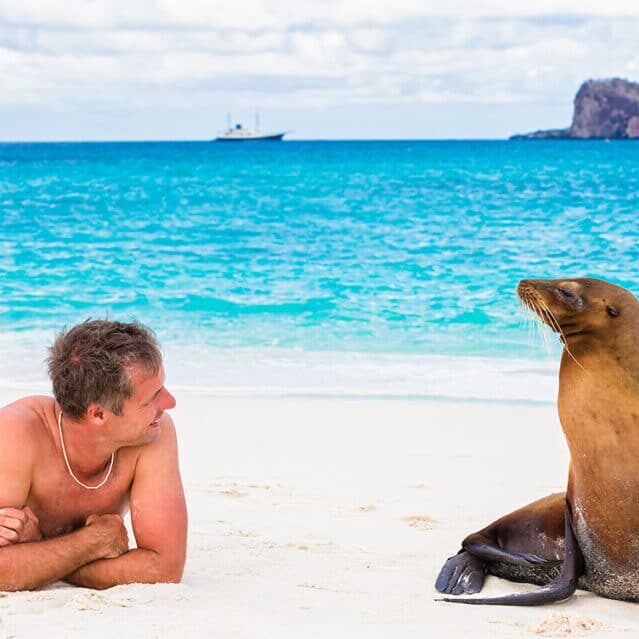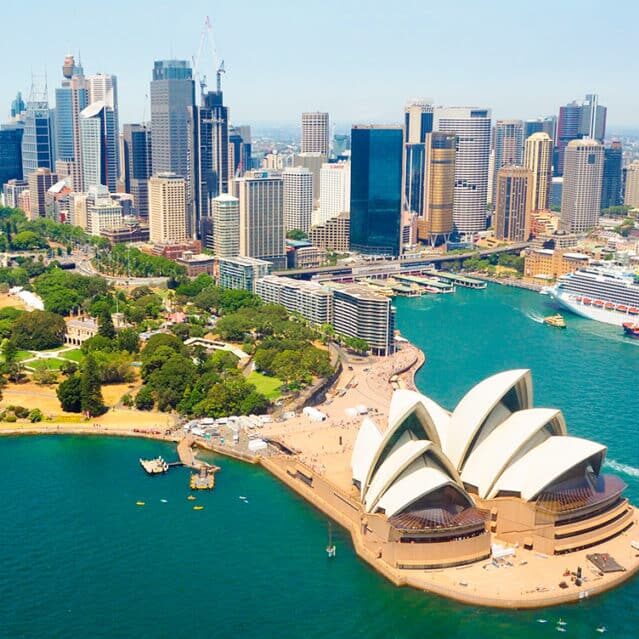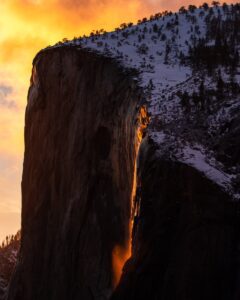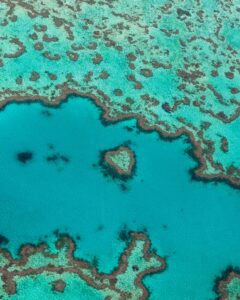Exploring the Sea of Stars in the Maldives: An Ultimate Guide
Disclaimer: This post may contain affiliate links. Please see our Disclosure Policy and Advertiser Disclosure for details.
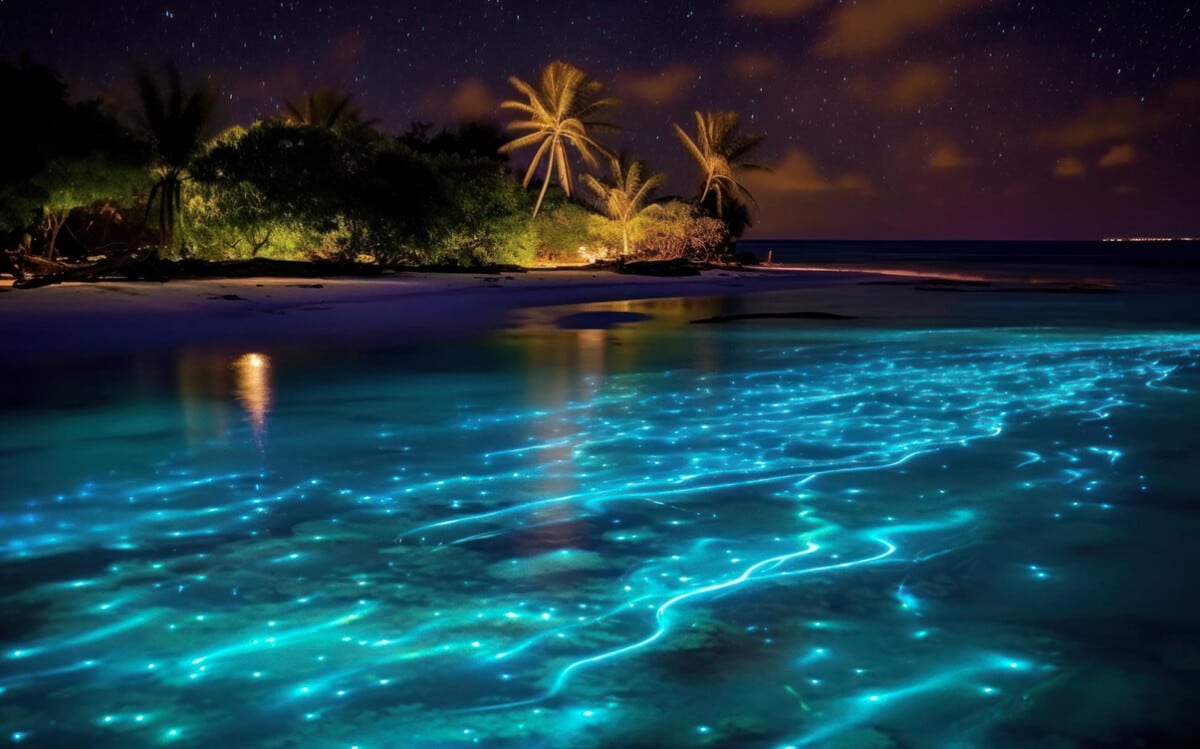
The Maldives – officially known as the Republic of Maldives – are a chain of islands in the Indian Ocean. Located southwest of Sri Lanka and the southern tip of India, the islands are home to many stunning tropical views, vistas, and vacation hotspots. Out of everything in the area, though, one attraction stands above the rest… or should we say below?
The Sea of Stars is a natural phenomenon present in the Maldives Glow Beach. Pictures of it look fake, and videos of it seem unnatural, but it’s a purely natural consequence of the unique life in the area, and it’s positively stunning.
It has to be seen to be believed, so we highly encourage any adventurer to take a trip to the islands, experience tropical life, and visit the Sea of Stars.
What is the Sea of Stars?
The Sea of Stars is a specific beach and area along the coast of one of the Maldives islands, specifically Vaadhoo Island. The island itself isn’t exactly a bustling hub, but the unique appearance of the Sea of Stars is making it an increasingly popular destination for adventurers and tourists alike.
First, let’s describe it. Imagine, for a moment, that you’re strolling along a beach. It’s sunset, with the sun slowly dipping beneath the waves. At first, you’re admiring the sky and the way the gorgeous light reflects off the ocean in the distance. Then, you start to notice twinkling. The sun dips beneath the horizon, and the stars high above start to come out.
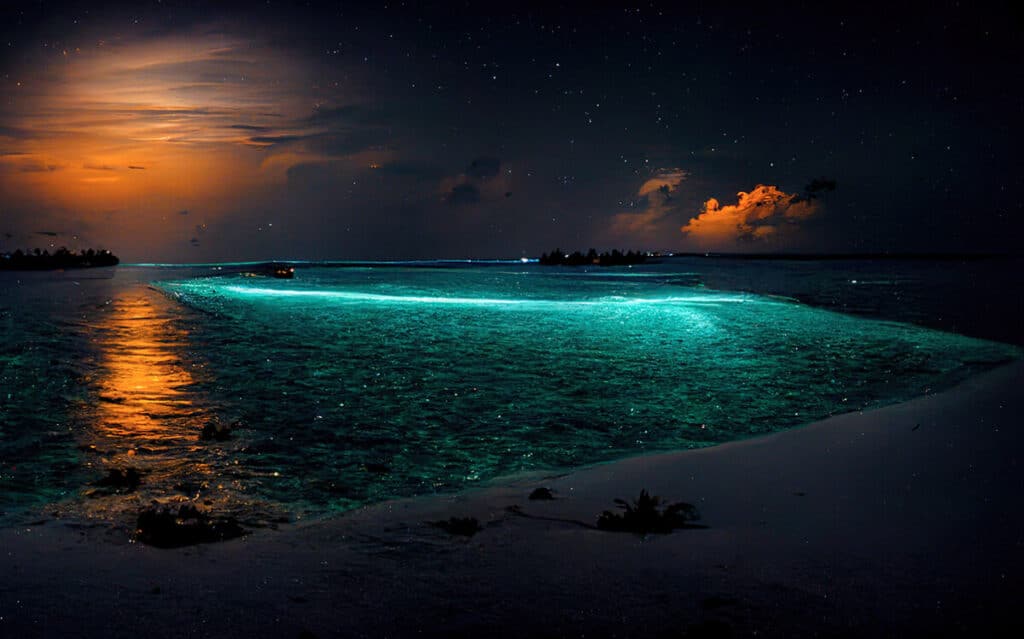
Glancing down, you might think the stars are sparkling off the waves. But as your eyes adjust, you notice that it’s not stars at all but cascades of vibrant blue rippling through the waters. Each wave crashing to the shore, each step you take, disturbs something in the water, and that something reacts by flashing blue like a cold firefly.
The darker it gets, the more vibrant the color. “Stars” sparkle beneath the waves and flare up when disturbed.
This is a phenomenon known as bioluminescence. It’s a natural glow produced by chemical reactions in living things. The firefly analogy is apt, as their flickers and glows are a similar effect of a different color. In the case of the Sea of Stars, it’s caused by a kind of plankton, sparkling to disorient predators and keep them from feeding on the tiny organisms.
Where is the Sea of Stars?
The island of Vaadhoo in the Maldives is the foremost home of the Sea of Stars. The same plankton get around and can be found all throughout the island chain, but it’s in much smaller numbers and much less frequently anywhere else. Put simply, if you want to have any reliable chance of seeing it, you need to visit Vaadhoo. The second-best island is Mudhdhoo, but it’s less likely than Vaadhoo.
Note: There’s actually more than one island named Vaadhoo in the Maldives. While looking at a map, the Sea of Stars is usually fairly well marked, but if not, you’re looking for the northerly Vaadhoo, not the one to the south.
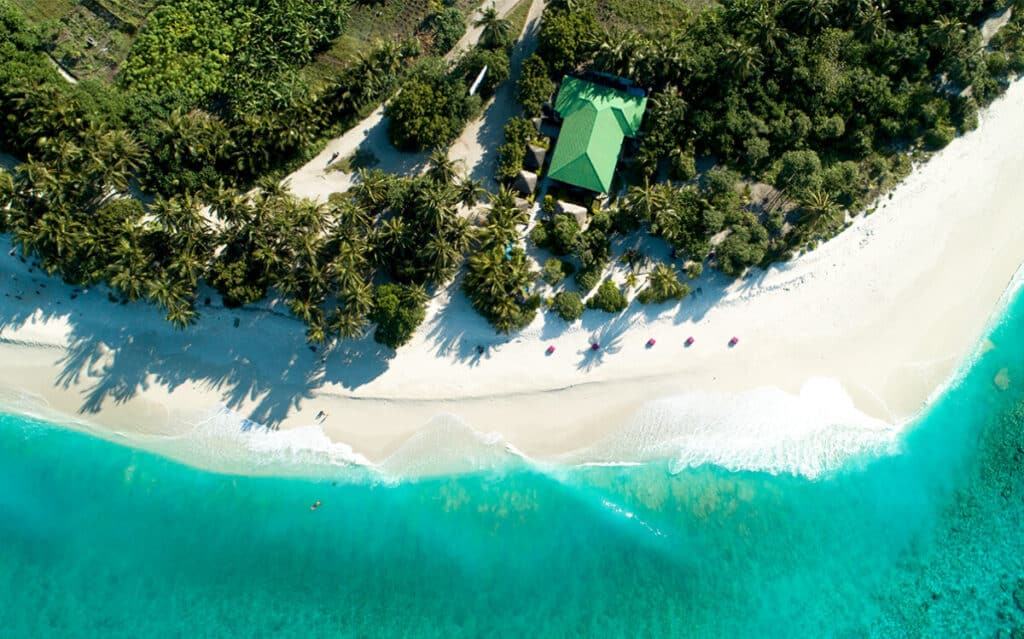
Luckily, Vaadhoo is located pretty close to the capital of the Maldives, Male. Male is the location of the Male International Airport, the primary way into and out of the island nation. Once you arrive in Male, you have a few options. The fastest is a simple domestic flight to Ifuru Domestic Airport, a ways to the north and close to Vaadhoo Island. A slower but possibly more pleasant option is to book a boat to take you there. A boat can bring you from Male to Vaadhoo directly and will take anywhere from 1-3 hours, depending on the kind of boat and whether or not you make any stops along the way.
When Can You See the Sea of Stars?
The Sea of Stars is a natural phenomenon that comes and goes at the whims of the tides and the plankton that make up the sparkles and stars beneath the waves. As such, it’s unpredictable. Sometimes, you do everything right, and you still don’t see it. Other times, you might not even know it can show up on the beach you’re strolling, but you look down, and there it is, an unexpected sight. In that sense, it’s actually a lot like the Northern Lights, only about as far from the poles as you can get on the planet.
That said, the peak season is the wet season, which is anywhere between May and November. Conditions are better for the plankton to grow and reproduce during that season, so you’re more likely to see the density of plankton necessary to make the Sea of Stars visible. Usually, July and August are going to be your best bets, with some spectacular shows still to be seen in September.
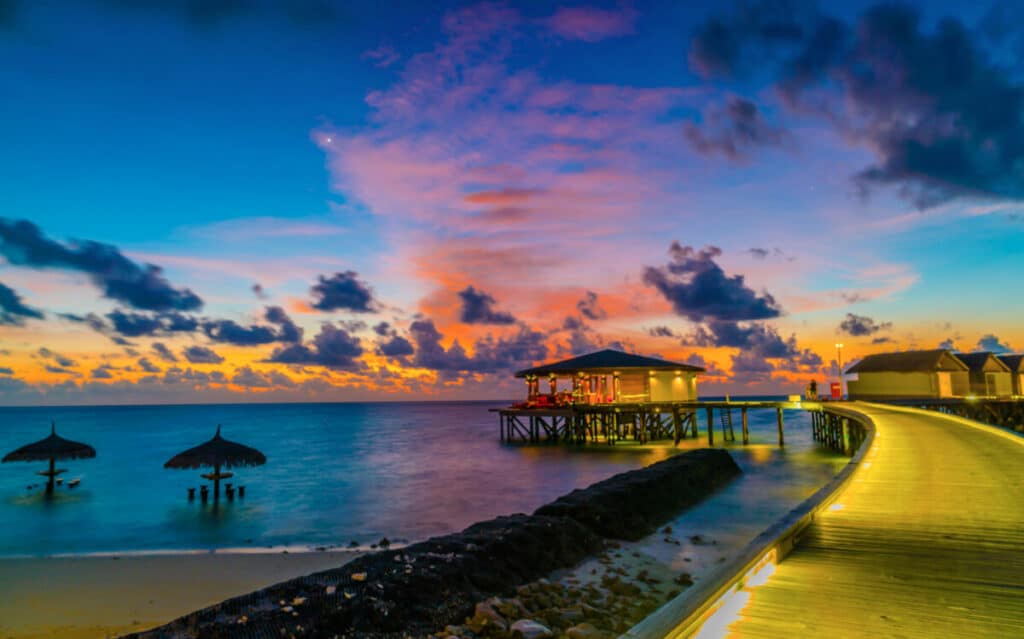
It also might be anywhere from dim sparkles to bright and vibrant constellations glowing beneath the waves. Seeing the Sea of Stars can vary from time to time, so it can be worth making more than one trip out on a longer stay in the Maldives just to see if you have better luck on a second attempt.
What Can You Do to Experience the Sea of Stars in the Maldives?
When you take a trip out to the Maldives to see the Sea of Stars, you’re not very limited in your options. Many tourists opt for a boat tour because they can head some distance out from shore and see the sparkling all around the island, and deeper water has a chance to show greater concentrations of plankton for a more vibrant, deeper effect. Sometimes, it even looks like a churning nebula of light beneath the waves.

If you aren’t going to take a boat, you can also stroll along the shore with your fellow tourists. Since the plankton react with their glow whenever they’re agitated, the crash of the waves on the sand will cause them to flare up, leaving trails and whorls of light along the beach. Your motion of walking through the surf will also flare them up, and each footstep will send a ripple through nearby plankton. Sometimes, they can even cling to your legs and feet, glowing briefly before they wash away.
If water adventures are more your style, you can also snorkel or swim with the plankton. The water is clear and, at least relatively compared to elsewhere on the planet, clean. The plankton are also harmless, using their light as their defense mechanism; you can swim up close, through, and around them without any risk to yourself.
Note: Swimming and snorkeling at night, especially in ocean waters, can be dangerous. If you want to swim in the Sea of Stars, practice good habits, like swimming with a partner, keeping safety gear and emergency lights on you, and staying comfortably close to shore. Know the conditions, too, and avoid possible rip currents and other hazards. Most importantly, follow local rules; if swimming is temporarily closed or prohibited for your safety, don’t brave it anyway. The experience isn’t worth being your last.
While you can do all of this on your own, there are also guided tours and experiences you can book from the nearby towns and the capital itself.
Is the Maldives Sea of Stars Unique?
Mostly! Truthfully, motion-reactive phytoplankton like the ones that cause the Sea of Stars are not unique to the Maldives. They can be found elsewhere in the world, including other nearby shores of India and Sri Lanka, and even further afield (and closer to home) in places like Puerto Rico and even some beaches of California.
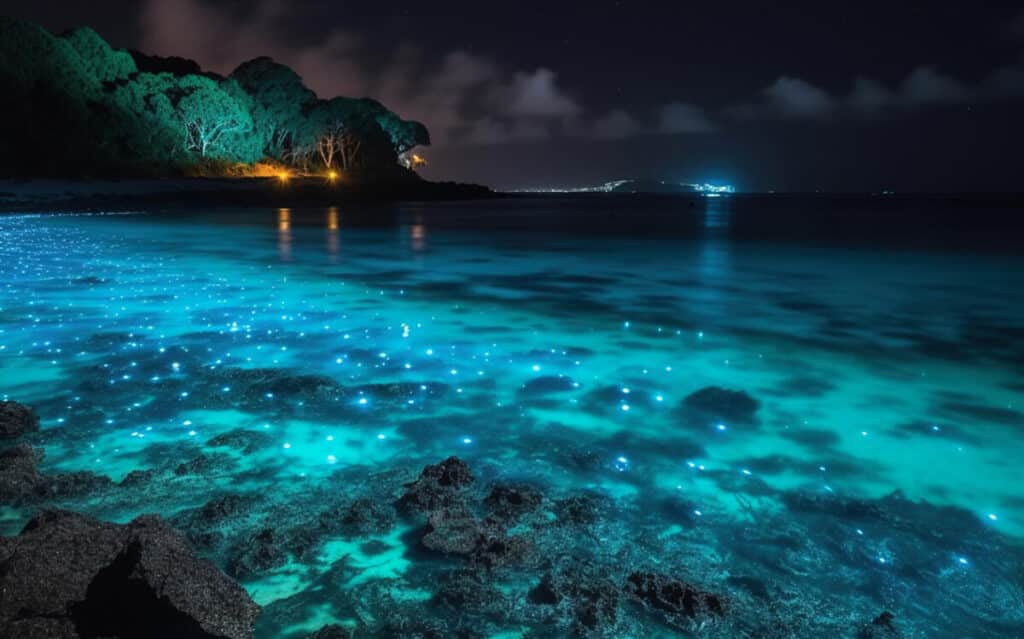
That said, there are a few compelling reasons to see the Sea of Stars in the Maldives rather than trying to catch it along a beach in California.
- It’s much more vibrant and much more common in the Maldives. Whether this is because the isolated islands are less polluted, because of some geographic features, or just because of the warmth and composition of the water, we don’t really know. It’s just true.
- You’re generally going to have less light pollution in the isolated tropical islands of the Maldives than you would off the coast of Cali. The darker it is, the more vibrant the plankton will appear, so the more brilliant the Sea of Stars will be. Even a relatively weak display in the Maldives will be way more vibrant than you’re likely to see elsewhere.
- It’s an exotic island nation! Who doesn’t dream of a tropical vacation? The Maldives are a fantastic place to go to get away from the hustle and bustle of modern life, spend some time hanging out on fantastic beaches, and experience a resort life that’s as far removed from our daily troubles as it’s possible to be.
Even if you don’t happen to have a good view of the Sea of Stars, there are plenty of other fantastic things you can do and see in the Maldives to make any trip worthwhile.
What Else Can You Do in the Maldives?
As a fantastic chain of tropical islands and a country far from most “modern” civilization, the Maldives relies a lot on tourism for its income. As such, the entire area is littered with all kinds of amenities, from rustic huts all the way to ultra-modern resorts.
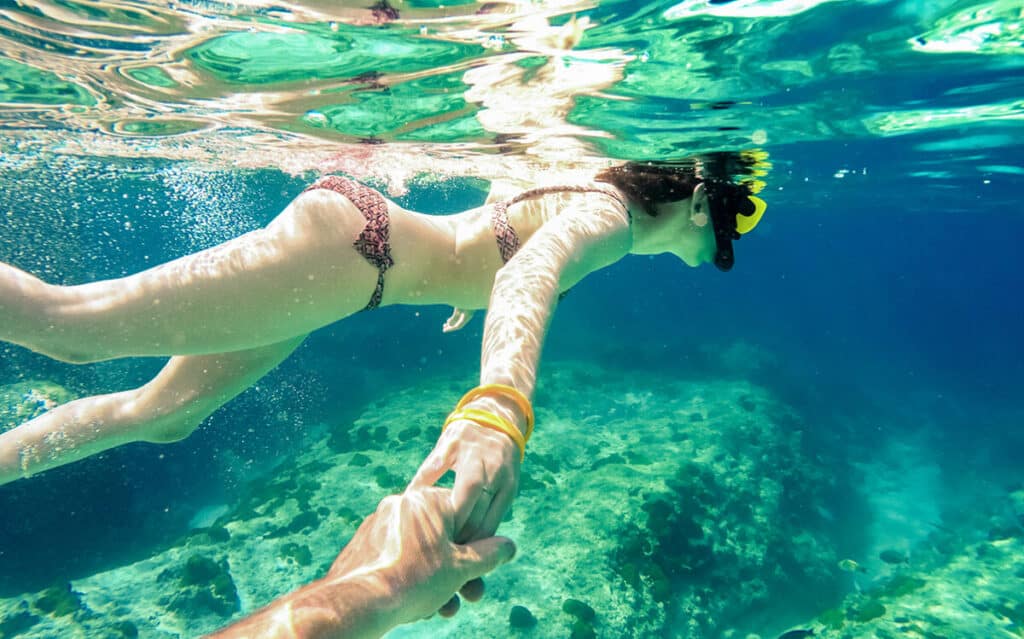
As long as you’re willing to island-hop, there’s plenty to do.
- Explore Male. As the capital, Male is the largest and most robust settlement on the islands, and there’s plenty to explore and do in the area.
- Check out the Dharavandhoo Fish Market. It’s a great little hub to buy some fresh fish, enjoy the manta rays swimming around the shores, and experience the tropical vibes.
- Visit the Biosphere Reserve in the Baa Atoll. With hundreds of corals and thousands of kinds of fish, this reserve isn’t one you can go traipsing through, but with a guided tour, you can see a wealth of natural beauty that is all too fleeting in our current seas.
Truly, there’s a wealth of things to see and do scattered all throughout the islands, so you have plenty of freedom and flexibility to explore.
Are the Maldives Safe?
Any kind of international travel can carry some risks. Unfortunately, the Maldives are occasionally the target of terroristic attacks. It’s not too common, but the State Department does put the Maldives at rank 2 out of 4 and recommends visitors exercise increased caution on visits. You can check for any relevant alerts on this page.
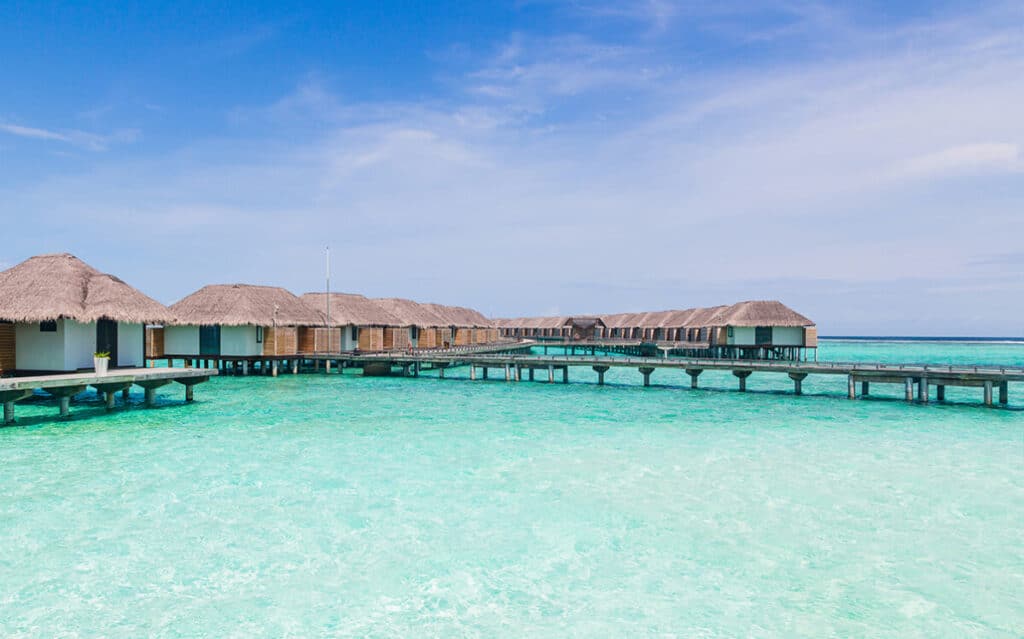
Ignoring that, the Maldives are generally quite safe. It’s a very laid-back country, and while there’s always the risk of conflict any time people are together, you’re not facing down organized crime or hearing gunshots in the streets. You’re more likely to be jostled by rough seas than you are rough people.
What to Pack for a Maldives Trip?
A trip to visit the Sea of Stars in the Maldives truly doesn’t need much. You aren’t going backcountry camping, and you aren’t bringing your own boat. Mostly, all you need is your usual luggage, plenty of light clothing for the tropical weather, swimming suits, and plenty of sunscreen to protect yourself from the UV rays beaming down from above. Bringing your own swimming gear can also be nice if you want to use equipment you’re comfortable with, but you can also rent gear from local shops with ease.
You may also want to pack moderately long clothing, as long as it’s light enough that you won’t overheat. Maldives is a Muslim country, and while you aren’t going to be arrested for showing some skin, you can exercise some restraint (at least in the towns) and at least partially cover up, regardless of gender.
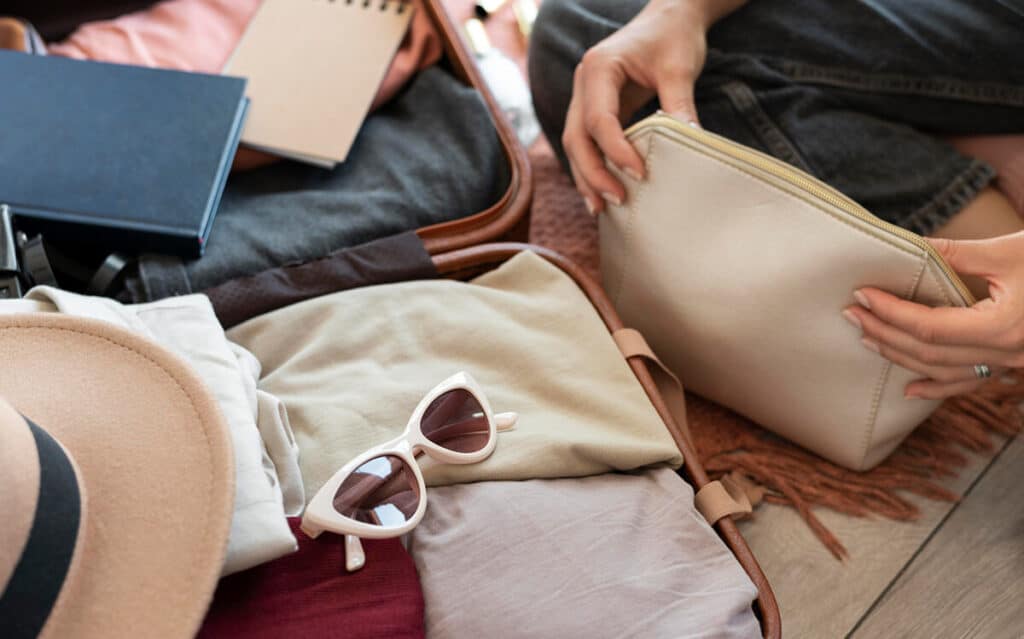
One thing to keep in mind is that, as an isolated island nation, you aren’t guaranteed to find a superstore with everything you could want to purchase. Niche needs, particularly for your own health, should be brought with you.
Have you ever visited the Sea of Stars? If so, how was it? Was it a brilliant display, or did it leave you disappointed (and wanting to make a return trip)? Either way, let us know in the comments!
You may also enjoy:

